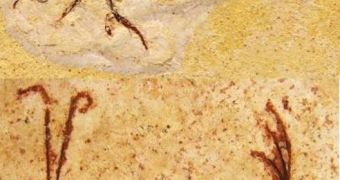A group of German investigators announces the discovery of a new order of insects that appears to have been the progenitor of modern-day mayflies. However, the researchers also discovered significant differences between the two groups of creatures.
Details of the new investigation were published in a special issue on Cretaceous Insects of the renowned scientific journal Insect Systematics & Evolution. The insect fossils were discovered in South Africa, and were determined to have lived in the Lower Cretaceous period.
The research effort was carried out by scientists with the Stuttgart Natural History Museum (NHM). They were the ones who identified the new insect order, and made the connection with modern mayflies despite the large number of differences between the two.
The German experts named the new insect group Coxoplectoptera. They were able to dig up fossilized remains of both adults and larvae, which gave them a lot more to work on in terms of finding out details about their way of life and their reproductive cicles.
NHM basal insects experts Dr. Arnold H. Staniczek and Dr. Günter Bechly were the leaders of the research study, and also the ones who determined the connection between mayflies and Coxoplectoptera. They were also the first to catalog the anatomical differences between the two groups.
“Due to the discovery of adult winged specimens and excellently preserved larvae, the scientists were able to clarify the phylogenetic position of these animals and presented a new hypothesis regarding the relationships of basal winged insects,” a press release published by EurekAlert explains.
“Equipped with wing venation of a mayfly, breast and wing shape of a dragonfly, and legs of a praying mantis, these winged insects look like a patchwork of various animals. The peculiar larvae, however, are reminiscent of freshwater shrimps,” the team writes.
Scientists in the international scientific community agree that the new investigation has provided a new type of understanding on the early evolution of insects. The Lower Cretaceous period spanned between 146 million and 100 million years ago.
This is the time when dinosaurs really came to prominence, with whatever species survived the late Jurassic being upstaged by other giant lizard groups. Overall, the Cretaceous was a period in which everything from microorganisms through insects and to giant dinosaurs evolved and thrived.
The way in which Coxoplectoptera larvae were embedded when they were laid seem to suggest that the insects preferred the habitats around rivers. This may help explain how these creatures came to be preserved for so many million years.
“Their unique anatomy indicates that these animals were ambush predators living partly dug in the river bed. These animals furthermore provided clues to the long-standing controversial debate of the evolutionary origin of the insect wing,” the press release concludes.

 14 DAY TRIAL //
14 DAY TRIAL //